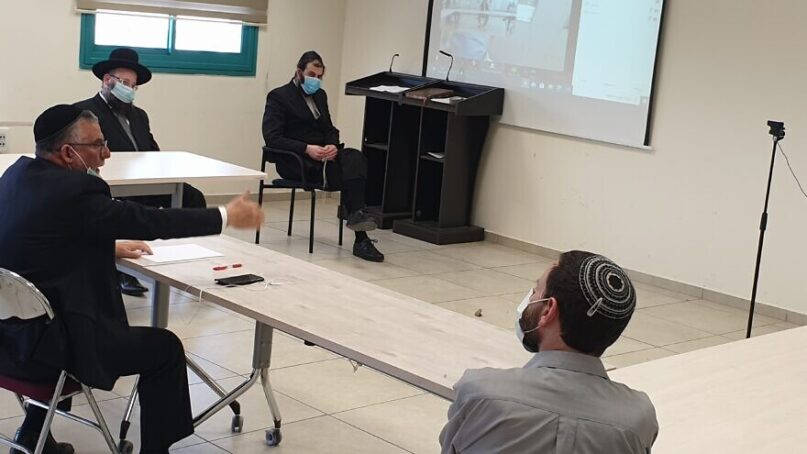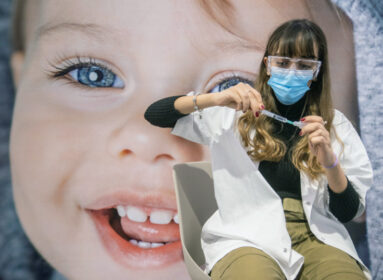
(May 8, 2020 / JNS) The holiday of Lag B’Omer is one of the most boisterous events in Israel, in particular the bonfires in Meron at the tomb of one of the greatest Jewish sages, Rabbi Simeon bar Yochai. The second-century sage is considered by many the author of the Zohar, one of the most important works of Kabbalah, the mystical teaching of Judaism.
“Rabbi Shimon requested that the day of his passing be observed joyfully,” says Rabbi Shais Taub, a popular lecturer who writes about Jewish mysticism, about the minor Jewish holiday marked this year starting at sundown on May 11 through the evening of May 12. For hundreds of years, a part of those joyous events was the grand bonfire in Meron, a small northern town of close to a thousand residents.
On Lag B’Omer, it becomes the hub of Israel, with two-dozen bonfires and nearly half a million people coming for 24 hours of celebration. To prepare for it takes an entire year and costs the government more than 15 million shekels (nearly $4.3 million). Despite the scaling down of COVID-19 restrictions in the country, this year the Ministry of Religious Affairs says there will be a much smaller version of celebration at the tomb out of precautions for the coronavirus pandemic that’s still raging in many countries, including the United States. There will only be four bonfires, with the amount of participants limited to around 10 participants at each lighting.
“In even more difficult times, there were lightings in Meron,” according to Rabbi Yosef Shvinger, director of the National Center for Holy Places in Israel. “I am happy that I have the merit to take part in continuing this tradition, even during this difficult time.”
Several customs of the day includes going to the park, kids playing with bows and arrows, and, of course, those bonfires, complete with roasted marshmallows.
“It is probably unrealistic to partake in some of the more common customs of the day,” says Taub. With that, he notes other customs that are connected to the talmudic story of a plague that killed 24,000 of the students of the first-century sage Rabbi Akiva could be marked. On Lag B’Omer, it is said that the plague stopped. “In our current situation, we could relate to this idea, and perhaps find relevance for ourselves. The idea of a plague coming to an end each of us can relate to as a cause for joy.”
As a sign of mourning for the 24,000 students, after Passover many do not get their hair cut, listen to music, purchase new clothes or even marry. On Lag B’Omer, says Taub, they are permitted, thus, “If you have an instrument, play it, or listen to the Jewish music you enjoy.”
‘A day memorable for families’
With music in mind, every year Shloime and Mirele Greenwald enjoy an outdoor concert in their neighborhood of Brooklyn, N.Y. “Our children always look forward to the joy and pomp in the Crown Heights streets,” says Shloimy Greenwald. With being locked in for almost two months, a concert would do wonders. With experience in organizing a truck that traveled around the streets of heavily Jewish communities in Brooklyn with a band before Passover, he brainstormed together with Zalmy Cohen and Berel Junik a grand online Jewish concert.
“There is nothing like music to bring joy on what would have been just another day in the house,” says Greenwald, who will also be holding a fundraiser that day for Hatzalah, the volunteer ambulance corporation with branches across the United States. “Just like other years, I want this day be memorable for families, and especially, the children.”
In New York City, Romemu will be having an online evening of Lag B’Omer teachings “around the fire” with music and song, followed by virtual attendees doing “a dance of liberation” in their homes.
Most synagogues contacted have said that while other years they may have done events, this year they will not be doing them.
At Chabad of West Boca Raton in Florida, they will be having a drive-by barbecue—meaning, cars can come for some kosher takeout food. Previously, they had a drive-by pickup of challah and chicken soup for Shabbat, which worked out well.
“It was special to see everyone,” says Chani Bukiet, co-director of the center with her husband, Rabbi Zalman Bukiet. “It is sad be calling it special, however, people just want human contact. They want to see another face, they want a smile, a good word in person, even if it is from six feet away and with a mask on.”
When they were thinking of what to do for Lag B’Omer, in addition to their online Zoom and Facebook Live classes, they decided to do another drive-by. “While we cannot hug each other, rub shoulders and sing Jewish songs in one place, for the day’s theme of Jewish unity, at least we can eat from the same barbecue,” she says.
At Cheder Menachem Day School in North Brunswick, N.J., “things won’t be like they used to,” says Rabbi Yaakov Chaiton, principal at the school, when every year they would go to a park to have fun. “We are encouraging our students to go with their families to a safe place where there is greenery, such as their backyard, or remaining in a socially safe distance in a park for a picnic.”
They will be encouraging the students to learn from the story of Rabbi Akiva. The Talmud, he says, tells that the calamity happened after they failed to exhibit respect for one another. “We are teaching the students to foster love for their friends and even more in our difficult times with their siblings, by learning to be more respectful to one another.”
Sefaria, the largest online resource for Jewish texts in Hebrew and English, wrote to subscribers that while they cannot do their usual holiday activities, they could always learn from Jewish teachings, “timeless lessons of Lag B’Omer.”
‘Parading and uniting like never before’
On their site are stories of Rabbi Akiva and Rabbi Simeon in their original source from the Talmud in Hebrew and English. Their team also compiled the sources to some of the customs of the day, including why many play with a bow and arrow. There is also a compilation of traditional and more modern songs for the holiday.
In this spirit, CKids, also run by the Chabad-Lubavitch movement, is creating an online event they are dubbing “The Biggest Parade Ever.” Local communities will be creating their own parades with children from local branches filming themselves at home holding banners on Jewish observance. With more than 500 local CKids clubs signed up for the event, parade organizers will merge children’s video clips from each branch that will then be broadcasted online to look as if they are celebrating together. “While a grand parade in the past was in one city,” says Zalman Loewenthal, director of CKids, “today communities from across the globe, such as Honolulu, Melbourne, Buenos Aires and Los Angeles, will be parading and uniting like never before.”
There will also be entertainment for the children during the marches, which were pre-filmed with social distancing, such as a science show by Dr. Schnitzel, in addition to singers and illusionists.
In several locations, Chabad Houses will be conducting a Lag B’Omer car parade. In Atlanta, Chabad Intown will be driving along many of the streets with flags mounted on the cars and a truck playing a custom-made video about the themes of the day. A tracker will notify community members when they will be on their block, so that locals could stand near their doors and cheer on the proceedings. They will also be stopping at local hospitals with a message of thanks for their service and health-care workers.
Georgia was the first state to open up after receiving national criticism for technically not closing down at all. In fact, coronavirus cases have gone up in parts of the state since restrictions were eased earlier this week.
Still, the emissaries are stressing that safety precautions—and face masks—are in order from the privacy of their own cars. But even seeing a bit of someone’s face, however, is something many are awaiting.
“I have not seen almost anybody from our community,” laments Dena Schusterman, co-director of Chabad Intown with her husband, Rabbi Eliyahu Shusterman. “We have seen them through just Facebook, Instagram and during online classes.”
She says that every time she sees someone one of her Zoom classes, she becomes emotional. “I really want to cry. I just want to hug them, to socialize, to just be normal,” she says.
Shusterman is looking forward to seeing the students in their school, and all the community members and many others who regularly attend their holiday events. “While we will not be close,” she makes a point of stressing, “it will be a very emotional [somewhat] face-to-face reunion.”
The times, she says, are difficult, but she keeps reminding herself not give up and to be “the most creative we could be with social distancing, and create an atmosphere of excitement, of Jewish pride. This is the best that we can do.”







 Southern New England Jewish Ledger
Southern New England Jewish Ledger













